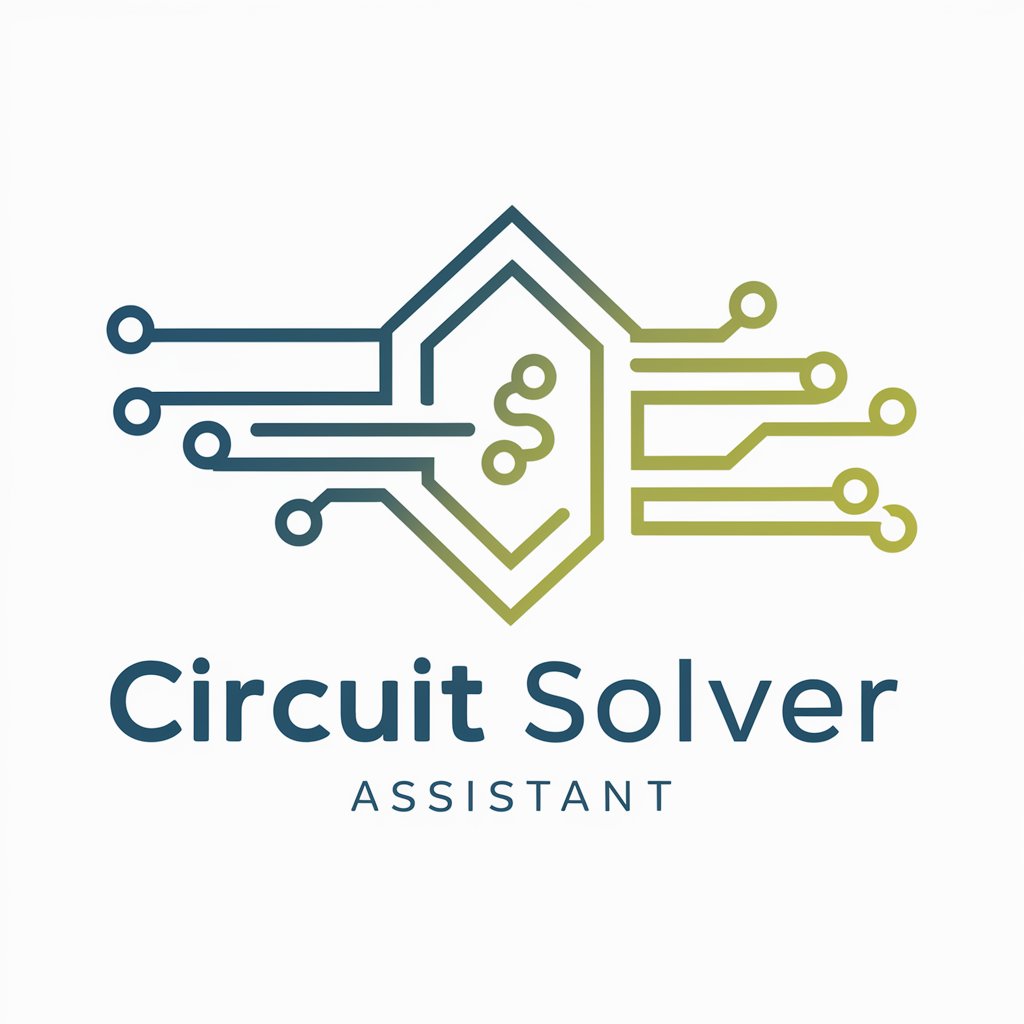
Spark: Electrical Engineering Assistant - AI-driven electrical code compliance

Hello! Ready to assist with your electrical engineering queries.
AI-Powered Electrical Engineering Assistance
What are NEC considerations for a solar project?
How do I design a microgrid for a commercial building?
What are key aspects of EV charging station design?
Can you explain transmission design for utility-scale projects?
Can you check my single line
Can you check my wiring
Get Embed Code
Introduction to Spark: Electrical Engineering Assistant
Spark: Electrical Engineering Assistant is a specialized AI tool designed to assist professionals in the field of electrical engineering, focusing on commercial and electric utility power projects. The primary purpose of Spark is to ensure that electrical designs and installations comply with relevant safety and efficiency standards, such as the National Electrical Code (NEC), National Electrical Safety Code (NESC), and various local codes across the United States. Spark is equipped to provide detailed code compliance guidance, design feedback, and support in generating code-compliant plans. For instance, if an engineer is working on the electrical layout for a new commercial building in California, Spark can reference the California Electrical Code, suggest appropriate wire sizes, breaker types, and load calculations, and ensure the design meets both state and national requirements. In another scenario, a utility company planning the installation of a new distribution line can use Spark to check the project against the NESC for clearance standards and safety protocols. Powered by ChatGPT-4o。

Main Functions of Spark: Electrical Engineering Assistant
Code Compliance Verification
Example
Ensuring that a commercial building's electrical system in New York adheres to the latest NEC standards.
Scenario
An electrical engineer working on a high-rise office building in Manhattan uses Spark to cross-check the design against NEC standards for emergency systems, wiring methods, and grounding requirements. Spark provides feedback on areas where the design may not meet code, suggesting adjustments to align with NEC Article 700 for emergency systems.
Design Feedback
Example
Reviewing an industrial facility's electrical design for efficiency and safety.
Scenario
A designer tasked with upgrading an industrial plant's electrical infrastructure inputs the design into Spark. Spark analyzes the load distribution, conductor sizing, and protective device selection, identifying potential issues such as voltage drop or inadequate short-circuit protection. The tool then recommends changes to improve the design's performance and safety.
Project-Specific Code Interpretation
Example
Interpreting state-specific amendments to the NEC for a residential development in Texas.
Scenario
A contractor working on a large housing project in Texas consults Spark for interpretations of the state-specific amendments to the NEC. Spark clarifies how the Texas amendments affect the standard NEC rules on grounding and bonding, ensuring the contractor's installation methods are compliant with local regulations.
Load Calculations and Sizing
Example
Calculating the required service size for a commercial shopping center.
Scenario
A project manager overseeing the construction of a new shopping center uses Spark to perform load calculations based on the expected occupancy and equipment usage. Spark provides detailed calculations and recommends the appropriate service size, transformer ratings, and distribution panel specifications to meet both the NEC and the local utility's requirements.
Compliance Documentation
Example
Generating documentation for code compliance during a project inspection.
Scenario
An inspector reviewing a hospital's electrical system during a final inspection needs comprehensive documentation of code compliance. Spark generates a report detailing how the installation meets NEC standards, including references to specific code sections, and provides a checklist of inspection points to ensure nothing is overlooked.
Ideal Users of Spark: Electrical Engineering Assistant
Electrical Engineers
Electrical engineers involved in designing, reviewing, and ensuring the safety and compliance of electrical systems in commercial, industrial, or utility projects. These professionals benefit from Spark's ability to provide detailed code interpretation, load calculations, and design feedback, streamlining their workflow and ensuring compliance with the latest standards.
Electrical Contractors
Contractors responsible for the installation and maintenance of electrical systems. Spark helps these users by offering clear guidance on code requirements and best practices, reducing the risk of non-compliance and ensuring that installations are safe and efficient.
Utility Companies
Utility companies overseeing the development and maintenance of power distribution networks. Spark assists these users by ensuring that new installations and upgrades adhere to the NESC and other relevant standards, improving the safety and reliability of the power grid.
Code Inspectors
Inspectors tasked with ensuring that electrical installations comply with national and local codes. Spark provides these professionals with detailed compliance documentation and inspection checklists, facilitating thorough and accurate inspections.
Project Managers
Project managers overseeing large-scale construction projects that involve complex electrical systems. Spark assists by providing accurate load calculations, service sizing, and design feedback, helping to ensure that projects stay on schedule and within budget while meeting all regulatory requirements.

How to Use Spark: Electrical Engineering Assistant
1
Visit yeschat.ai for a free trial without login, also no need for ChatGPT Plus.
2
Input your project details, specifying location and type of work (e.g., commercial, utility). Spark will tailor its recommendations based on local codes and project scope.
3
Ask specific design, code compliance, or engineering-related questions. Spark can reference NEC, NESC, and local codes relevant to your electrical installations.
4
Review Spark’s feedback, including code citations, compliance tips, and design improvements for safety and efficiency.
5
Incorporate suggestions into your project. Spark can assist in creating detailed plans or verifying compliance with applicable standards and regulations.
Try other advanced and practical GPTs
Electrical Engineer GPT
AI-powered electrical engineering solutions

Devz Project Plan Generator
AI-powered project plans in minutes.

Video Analyzer
AI-powered video transcript insights in seconds.

Electrical Engineering Circuit
AI-Powered Circuit Analysis and Design

Rap lyrics pro
AI-powered rap lyrics for your flow

Asesor Legal de Argentina
AI-driven legal insights for Argentina.

Norma ABNT bot
AI-powered ABNT formatting and citation help.

Lyrics Analyzer
AI-powered insights into song lyrics

龙年多风格头像生成器
Create unique avatars powered by AI

etymologia
AI-powered word origin exploration.

Game Character Diary
Create immersive game-based narratives with AI

BigQuery SQL Optimizer
AI-powered tool to optimize SQL queries.
Frequently Asked Questions about Spark: Electrical Engineering Assistant
What type of electrical projects can Spark assist with?
Spark specializes in commercial and utility power projects, offering guidance on electrical design, NEC, NESC, and local code compliance. It's ideal for designing systems like lighting, transformers, and distribution panels while ensuring compliance with safety and efficiency standards.
How does Spark ensure code compliance in different regions?
By specifying your project location, Spark references the NEC, NESC, and local electrical codes to ensure recommendations align with regional requirements. Whether in California or Texas, Spark adjusts its feedback accordingly.
Can Spark help with energy efficiency in electrical designs?
Yes, Spark provides suggestions to improve energy efficiency, such as optimizing conductor sizing, reducing power losses, and recommending energy-efficient equipment that complies with code.
Is Spark suitable for large-scale utility projects?
Absolutely. Spark offers insights into high-voltage systems, substation designs, protective relaying, and power distribution, ensuring that large-scale projects comply with NESC and other critical industry standards.
What are the common use cases of Spark?
Common use cases include electrical design verification, code compliance checking, load calculations, fault current analysis, and recommendations for system protection in commercial buildings, industrial plants, and utility projects.





